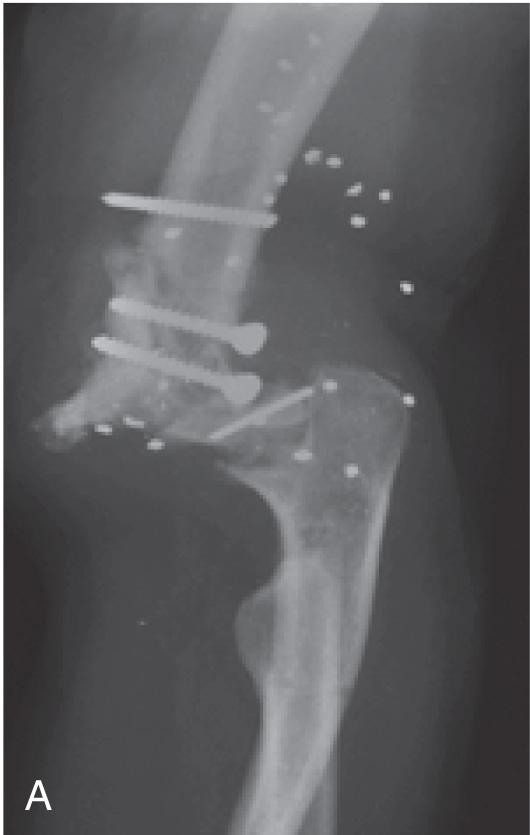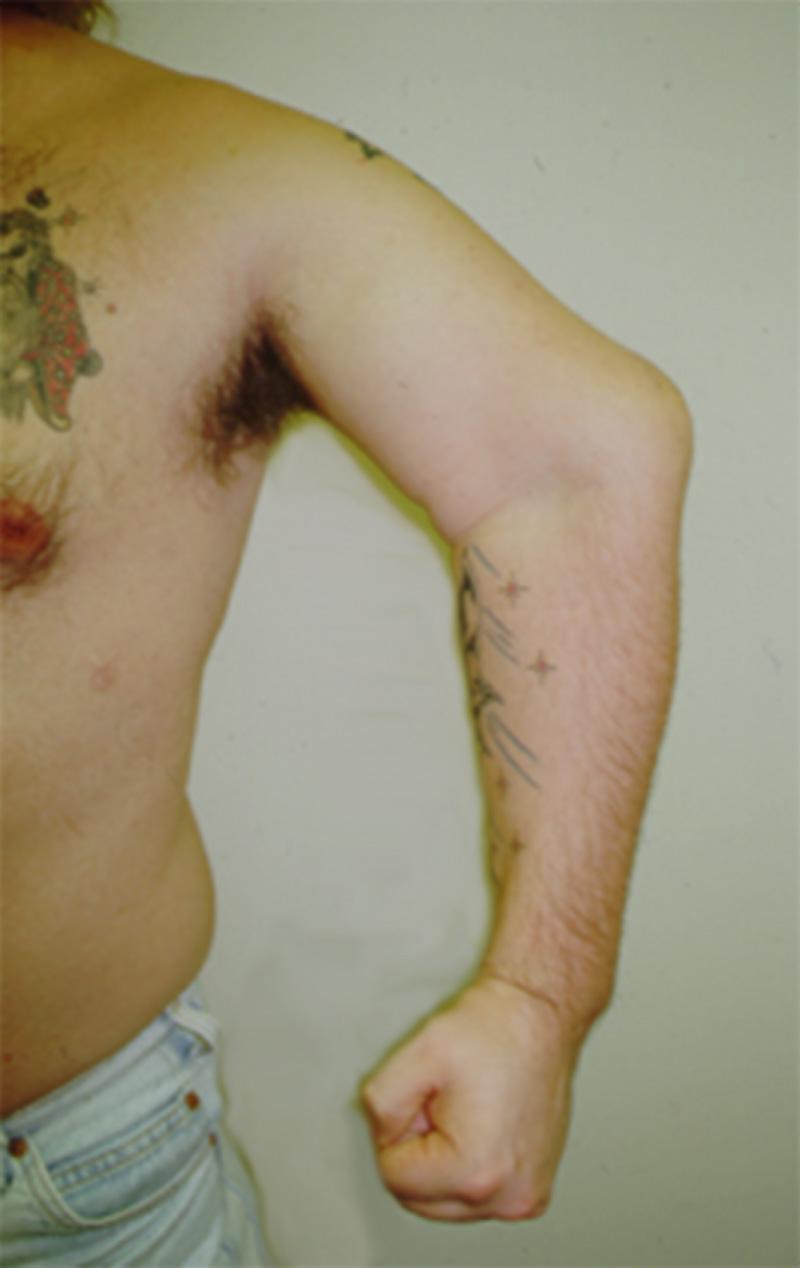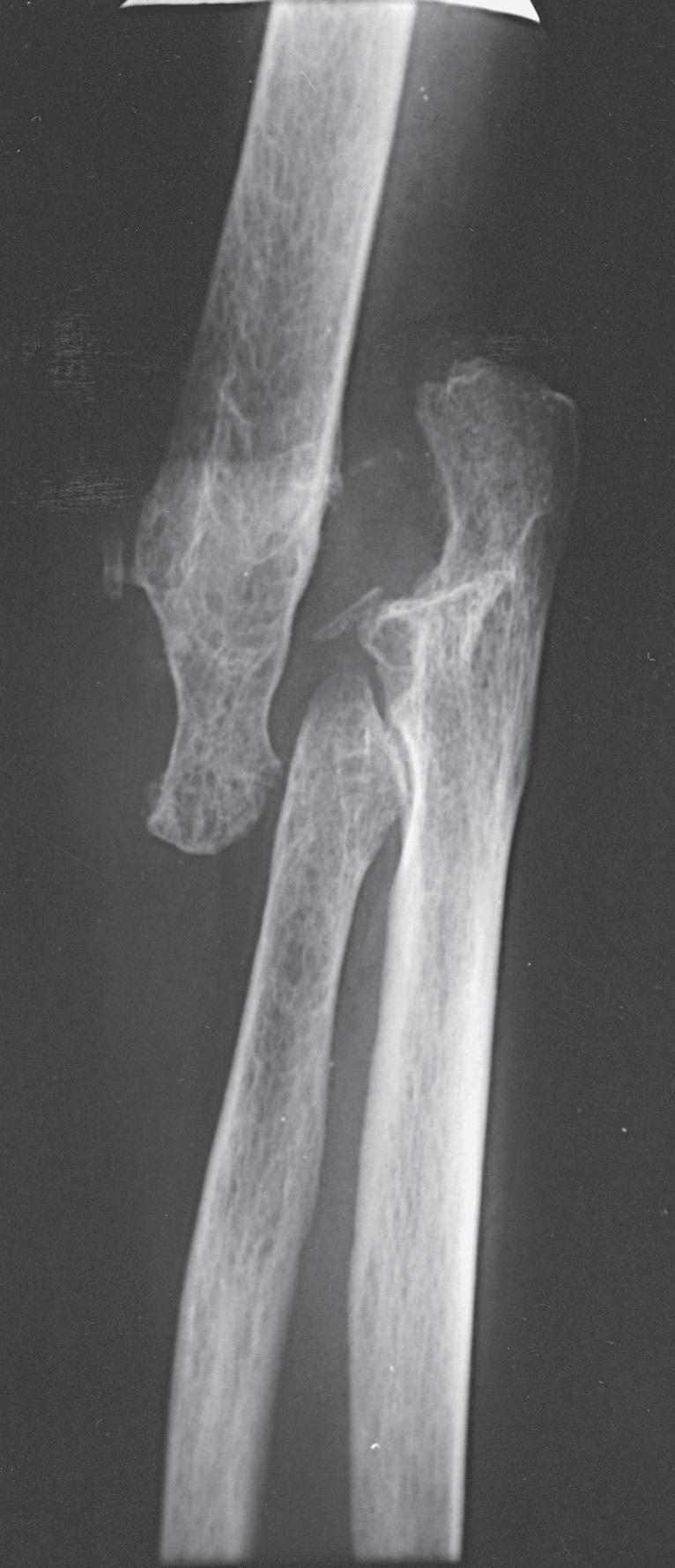Physical Address
304 North Cardinal St.
Dorchester Center, MA 02124
Normal upper-extremity function requires a stable and mobile elbow joint. The unique architecture of the articular surfaces and surrounding soft tissues confers stability to the elbow. An intact joint is required for motion, providing a fulcrum for the muscles crossing the elbow to exert their power. Disruption of the bony and/or soft tissue architecture of the elbow compromises the ability to position the hand in space for functional activities. Dysfunctional instability of the elbow is defined as a condition in which the elbow joint no longer offers a stabilizing fulcrum to allow the hand to be functionally controlled in space.
Dysfunctional instability of the elbow may result from distal humeral nonunion, severe rheumatoid destruction of the joint, or extensive posttraumatic bone loss as a result of treatment of trauma, infection, or tumors and can describe a spectrum of elbow dysfunction. Lesser degrees of joint destruction cause instability, but often the patient can compensate for this, such as by adducting the arm against the side. When the forearm is dissociated from the arm, the loss of angular and longitudinal stability creates a flail arm and is an extreme example of this condition. With this extent of bone deficiency, there are few options to restore the fulcrum effect of the joint other than a linked prosthetic replacement. This chapter reviews the presentation of patients with dysfunctional instability and the surgical technique and outcomes of total elbow arthroplasty for dysfunctional instability.
Younger patients often present after high-energy trauma, while more elderly patients typically present with a long-standing issue such as rheumatoid arthritis or nonunion ( Fig. 97.1 ). In patients with rheumatoid arthritis, the process occurs gradually, with progressive osseous resorption and a sudden marked increase of instability caused by a fracture occurring from minor trauma.

It is critical to obtain a detailed surgical history, searching for evidence of infection or prior nerve injury from the injury or from subsequent treatment. As much detail as possible regarding prior treatment and the postoperative course is very helpful. If there is any evidence of prior sepsis, the joint is aspirated as part of the assessment.
The physical examination ascertains findings that may affect surgical decision making or influence outcome. Soft tissues should be carefully evaluated for contracture and compliance, and the locations of previous incisions are noted.
The neurologic examination pays attention to the motor and sensory function of all three nerves crossing the joint. The effect of tourniquet application and nerve function after prior procedures is noted during the examination. Motor function of the triceps, brachialis, and biceps is of particular concern as the insertions are often violated by the disorder.
Both active and passive motion are assessed, and the extent of instability and any effective dynamic stabilizing function of the musculature is noted. Minor degrees of elbow instability maintain enough of a fulcrum in the adducted position to allow active range of motion. However, abduction of the arm creates a varus moment at the elbow, compromising the fulcrum and resulting in instability ( Fig. 97.2 ). Major degrees of instability, such as a flail elbow, have dissociation of the forearm referable to the brachium and over time shorten and displace because of the unopposed pull of the extensors and flexors of the arm ( Fig. 97.3 ).


Standard anteroposterior and lateral radiographs are typically sufficient to provide an appreciation of the cause and extent of the injury. Long-standing fixed deformities such as with a nonunion can make interpretation of standard radiographs difficult. For instance, lack of full elbow extension results in a foreshortened projection of the humeral shaft in the anteroposterior plane, making this fragment appear smaller than it actually is. In this scenario one may erroneously conclude that the joint is not salvageable. Advanced imaging, including computed tomography with three-dimensional reconstruction, can be helpful when different treatment options are being considered, such as revision fixation and grafting of a nonunion. However, when the decision to proceed with total elbow arthroplasty has already been made, advanced imaging is rarely indicated and provides little additional information.
If there is a history or findings of nerve damage, an electromyographic study is performed. This allows thorough documentation of nerve status and aids in the preoperative discussion of expectations with the patient as well as in helping develop the surgical plan of exposure and execution.
In addition to the usual preoperative laboratory studies, in all instances inflammatory markers must be measured before surgery: complete blood count with differential, erythrocyte sedimentation rate, and C-reactive protein level. If these suggest a possibility of an infection or if the history reveals or is suggestive of a prior infection, the joint area is aspirated under ultrasound guidance. If the entire workup for infection is negative but concern for infection remains high, a débridement and staged implantation should be considered as a real-time option, and the patient is so informed (see Chapters 100 and 101 ).
Dysfunctional instability of the elbow is an extreme clinical situation with severe functional deficiency, but typically there is little pain. Hinged bracing of the extremity is an option in those patients who choose nonoperative management or are not appropriate surgical candidates. However, braces are difficult to fit and often do not stay properly aligned, especially in patients with large arms. Therefore in many patients, the brace is not used since the nuance factor exceeds the perceived benefit. Nonetheless, bracing should be considered and potentially trialed in patients with minimal pain wishing to avoid arthroplasty.
The indications for total elbow arthroplasty have changed significantly in the past 2 decades. The good track record of total elbow arthroplasty as a primary reconstructive procedure has led to its application in more demanding disorders. a
a References .
The application of total elbow arthroplasty to the treatment of patients with dysfunctional instability was fueled by the functional disability and by the unpredictable results of nonreplacement surgical procedures. The nonreplacement surgical options include open reduction internal fixation for nonunion, arthrodesis, and allograft reconstruction.
The primary indication for total elbow arthroplasty in dysfunctional instability is instability that precludes useful function of the arm. The ideal patient is older than 60 years and has a low functional demand. Younger patients with severe dysfunction are also treated with replacement when all else has failed, pain is a component of the problem, the patient fully understands the recommended restrictions, and it is recognized that the salvage of a failed arthroplasty is no worse than the condition with which we are starting.
Become a Clinical Tree membership for Full access and enjoy Unlimited articles
If you are a member. Log in here